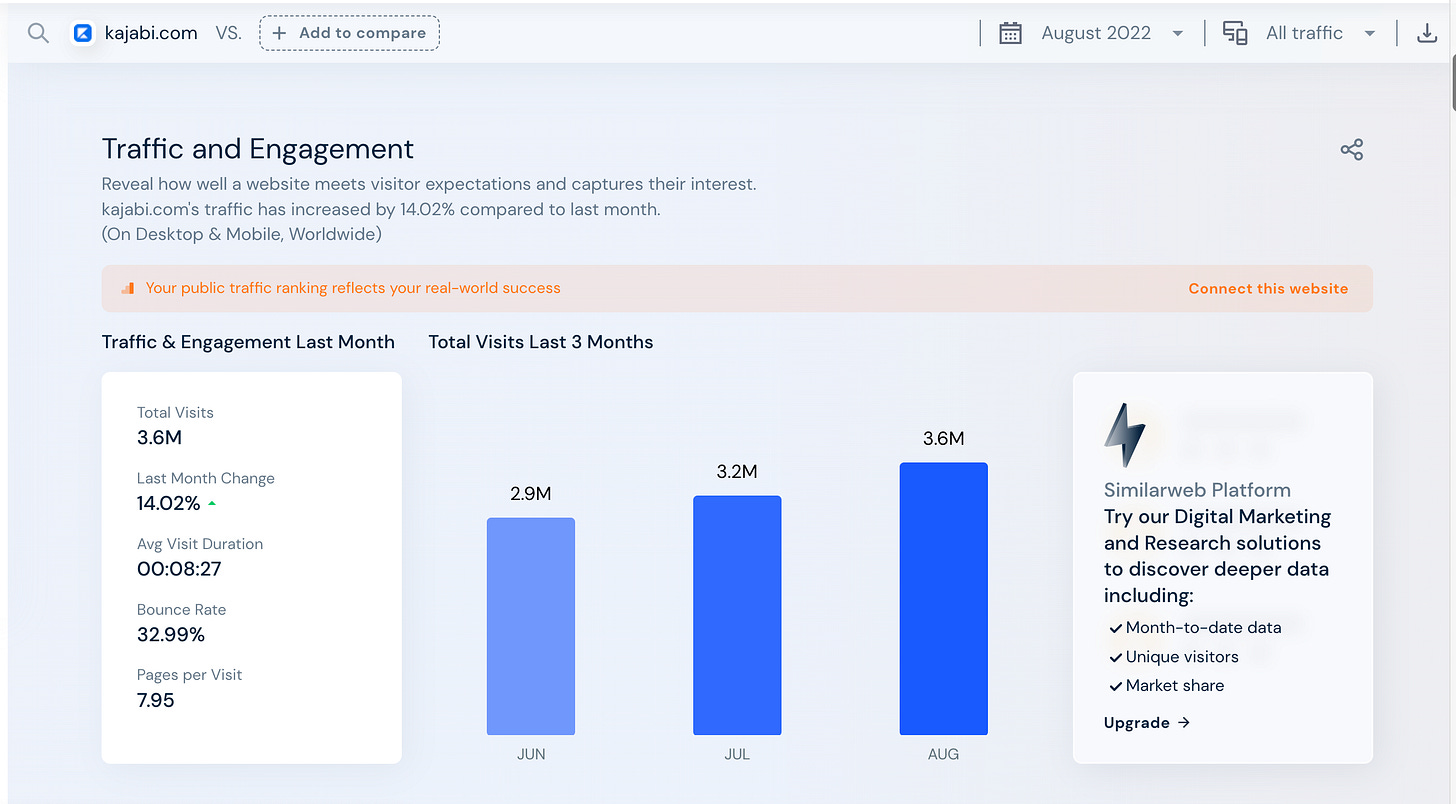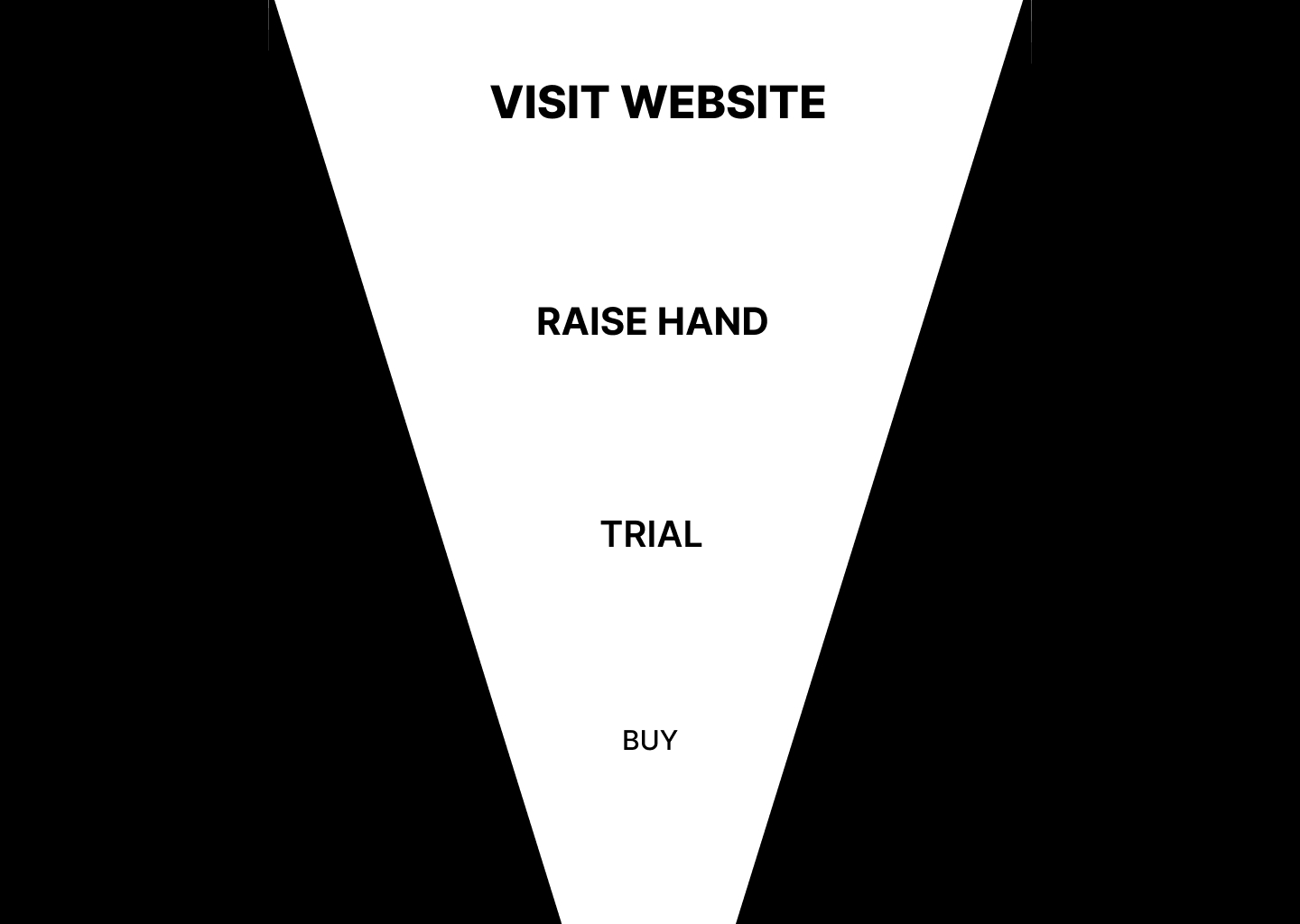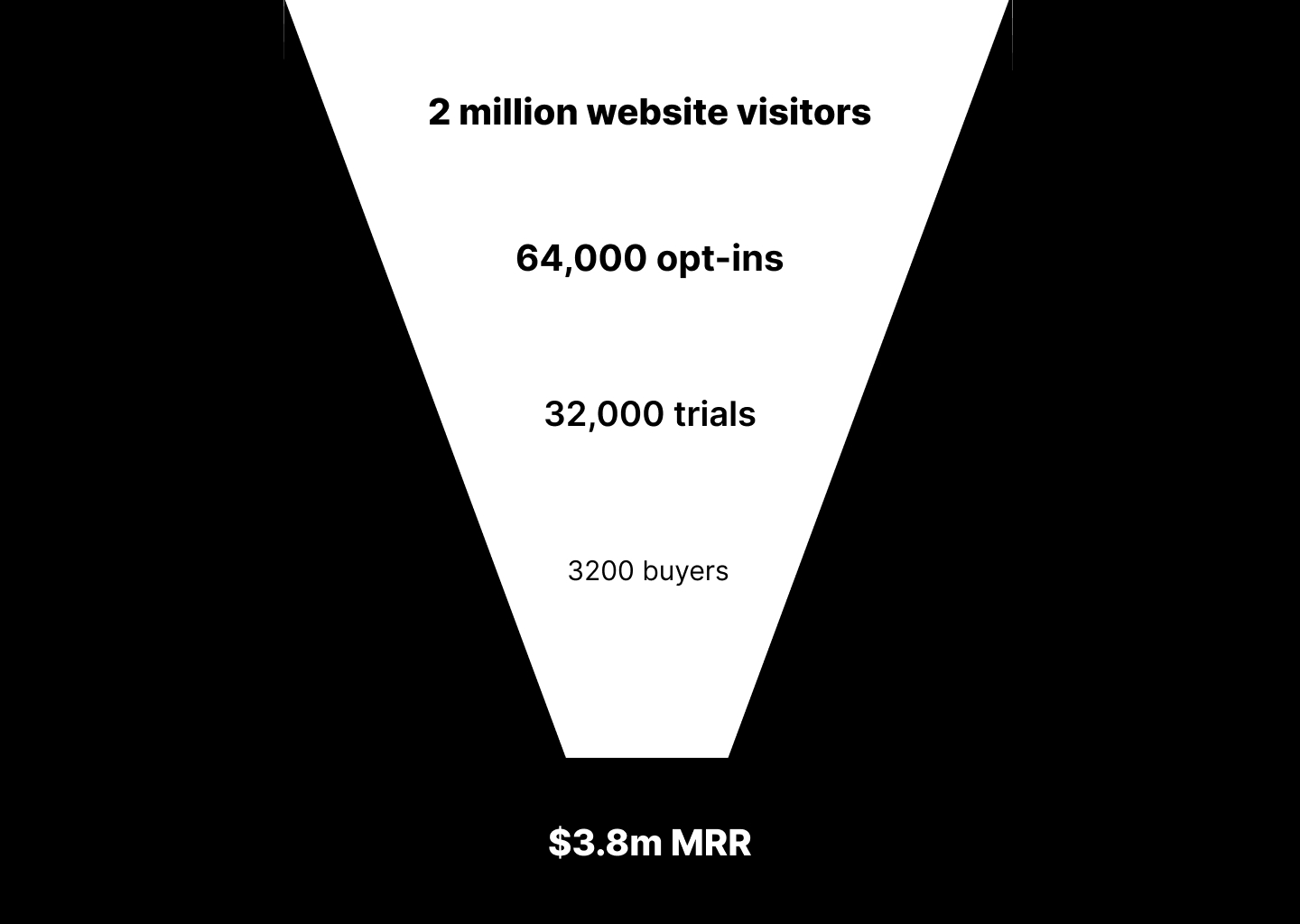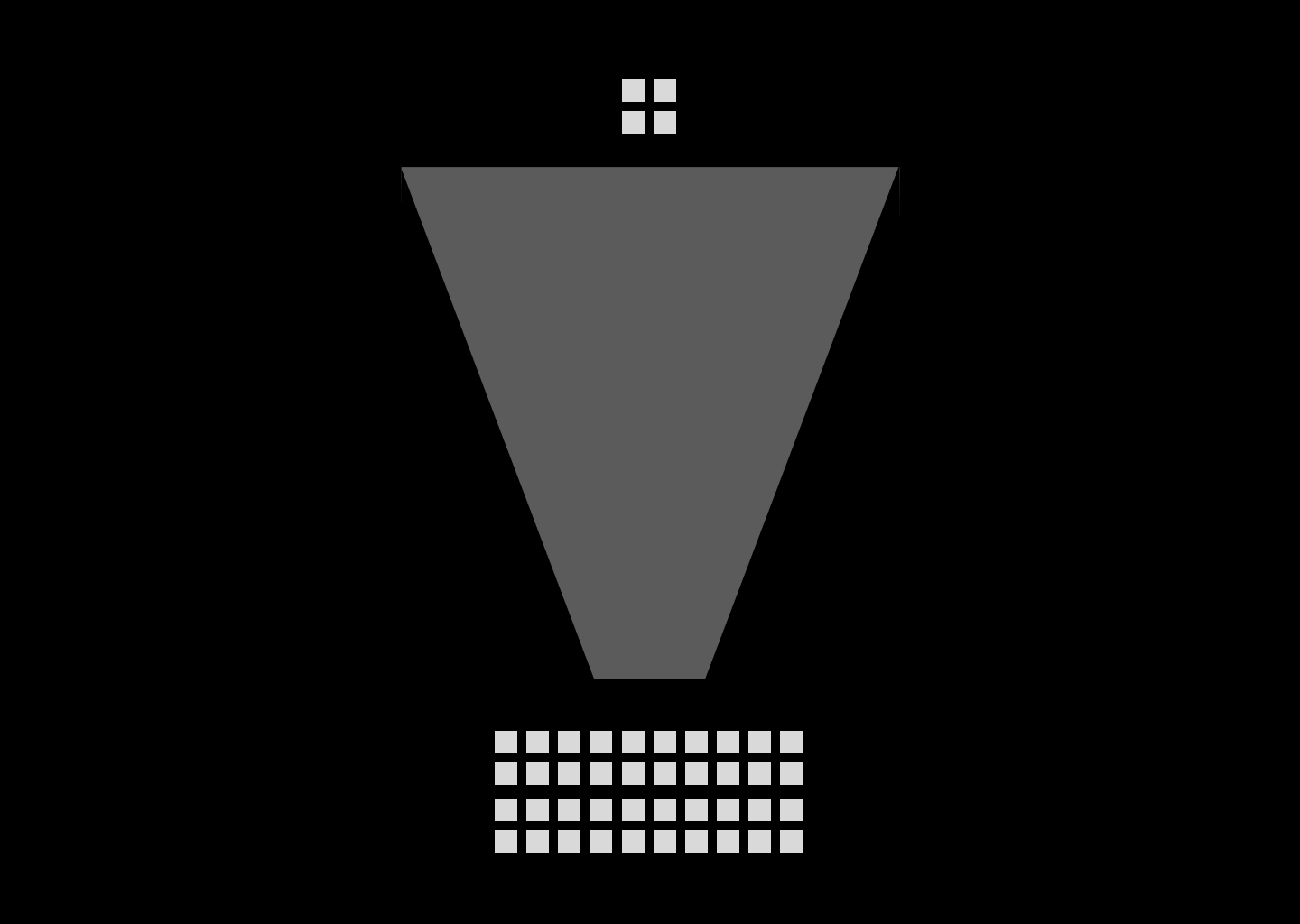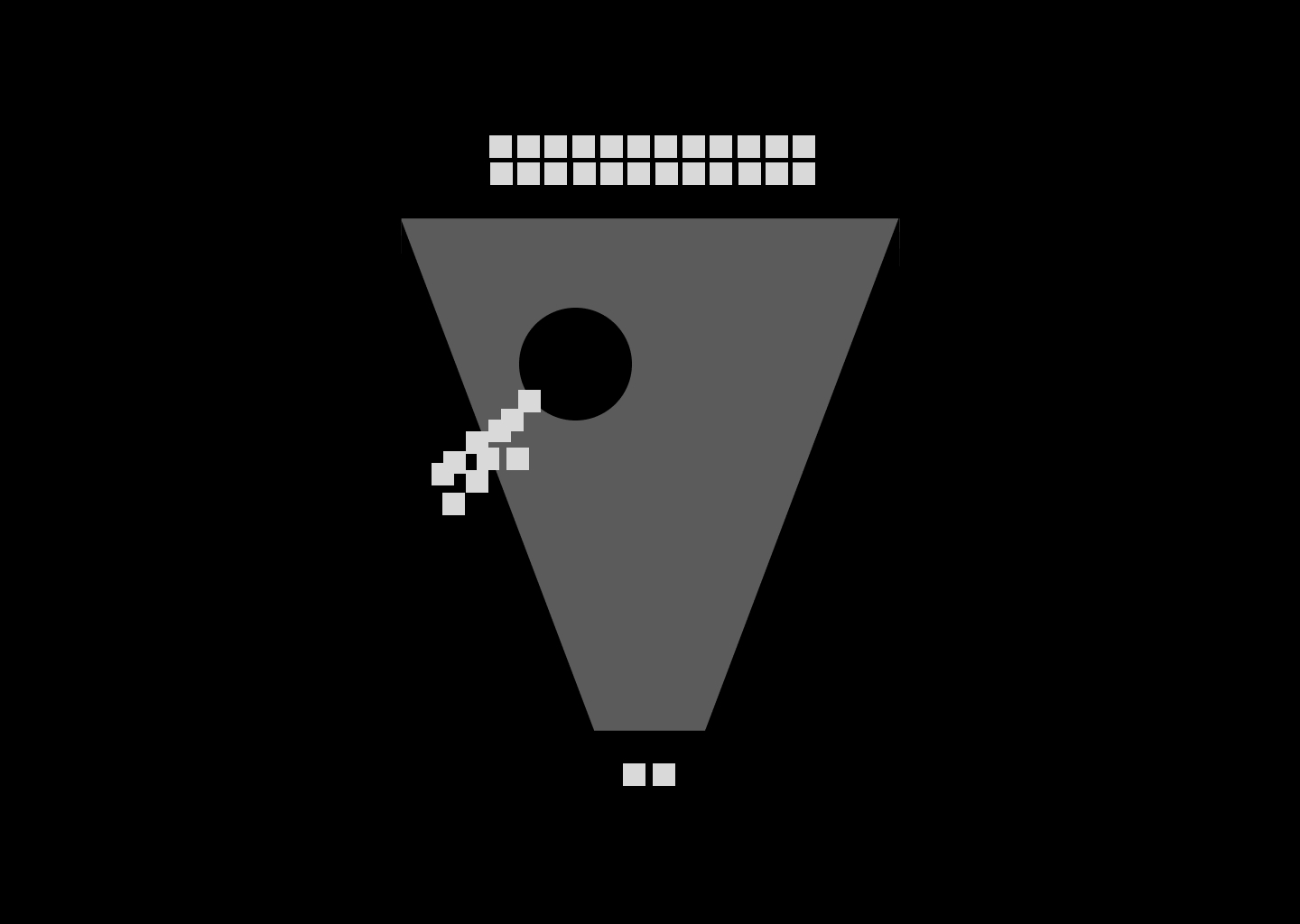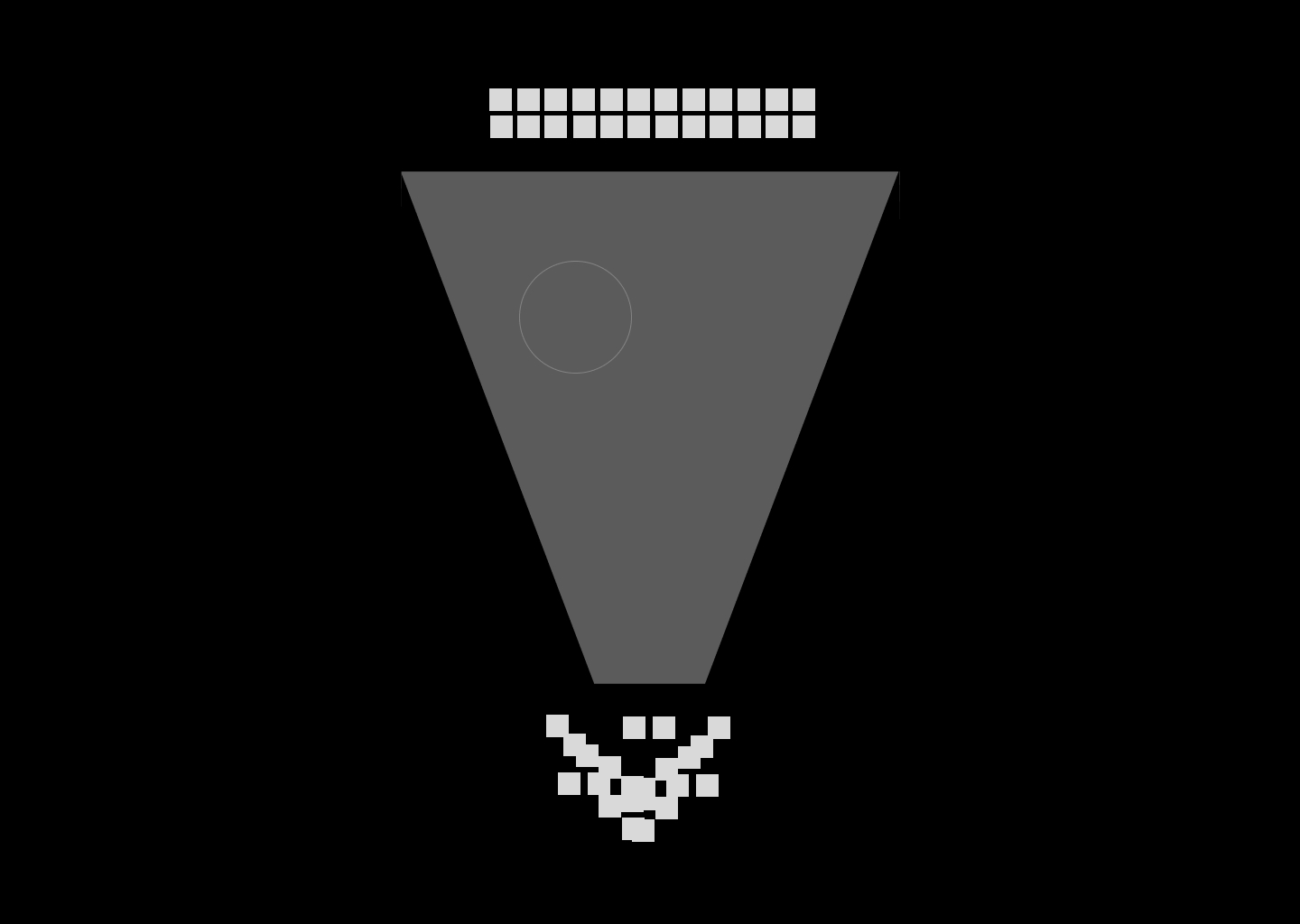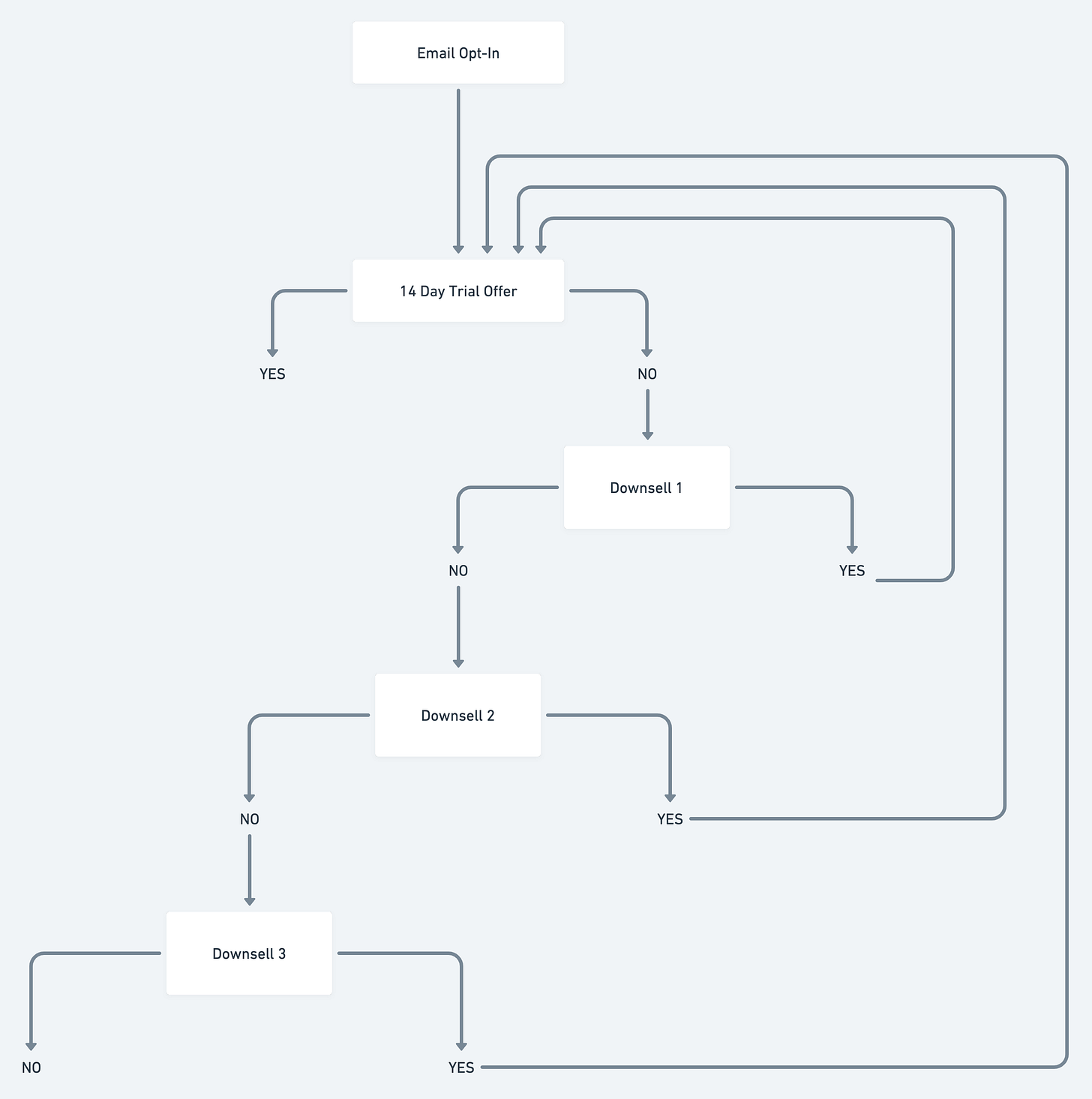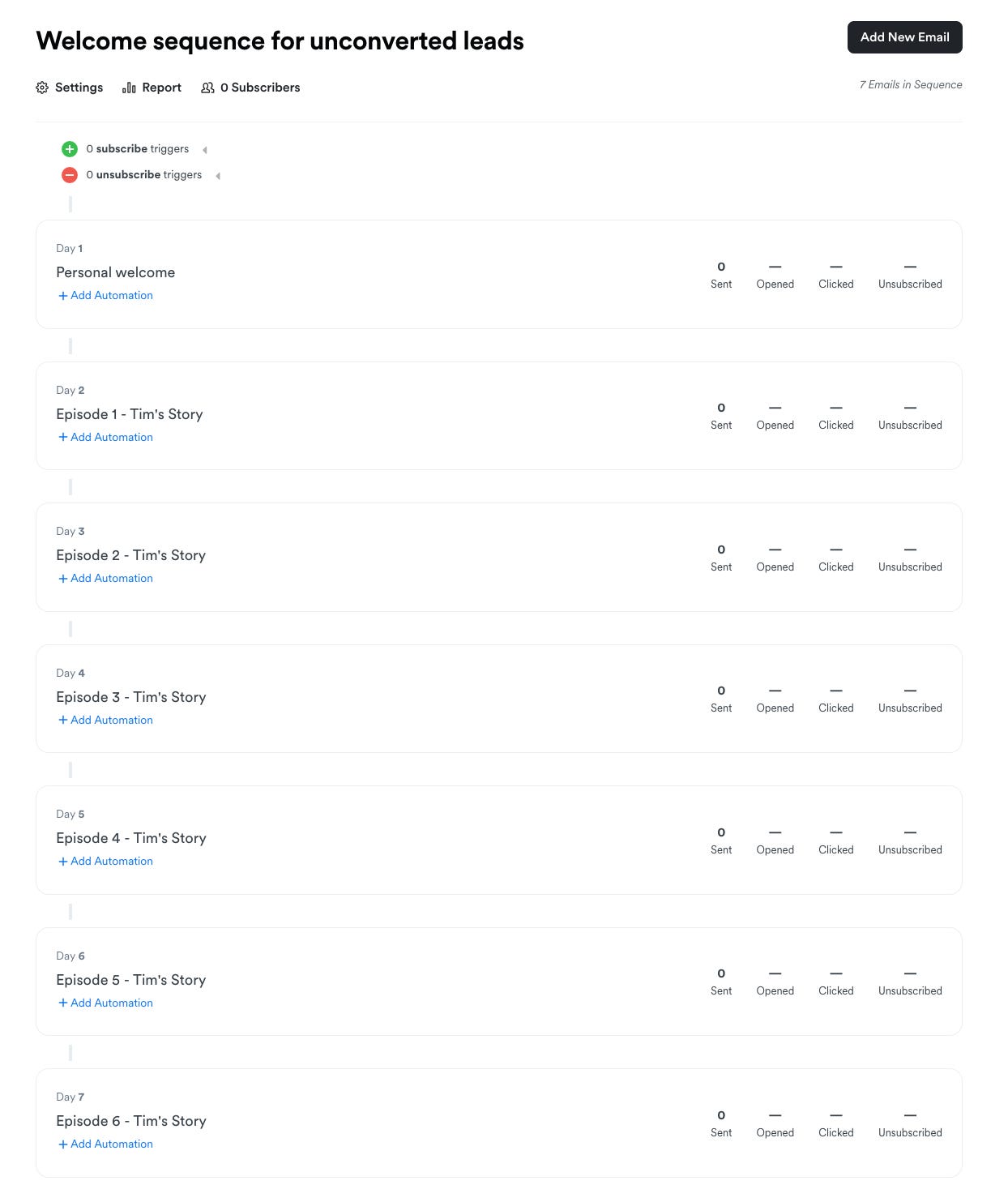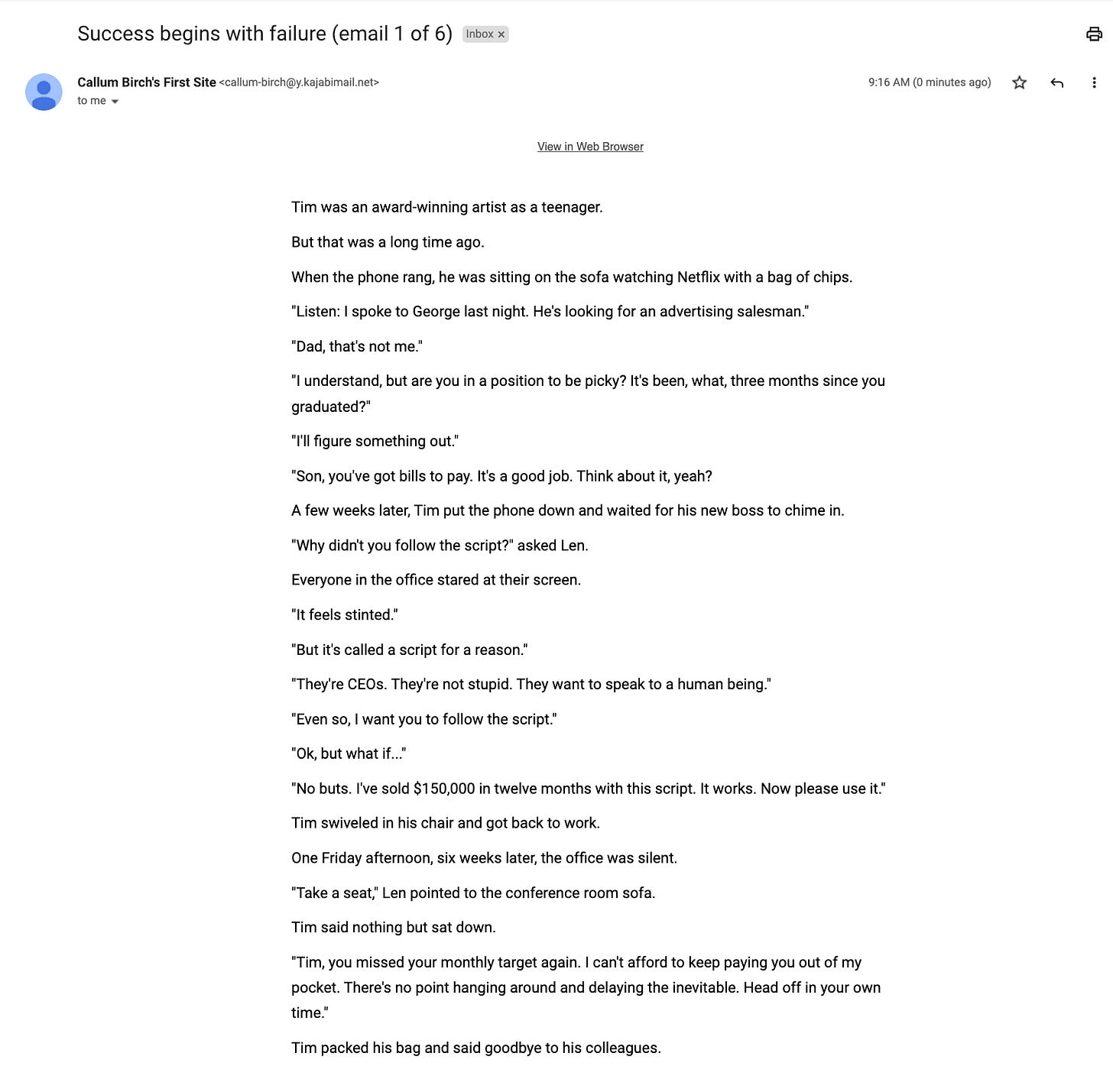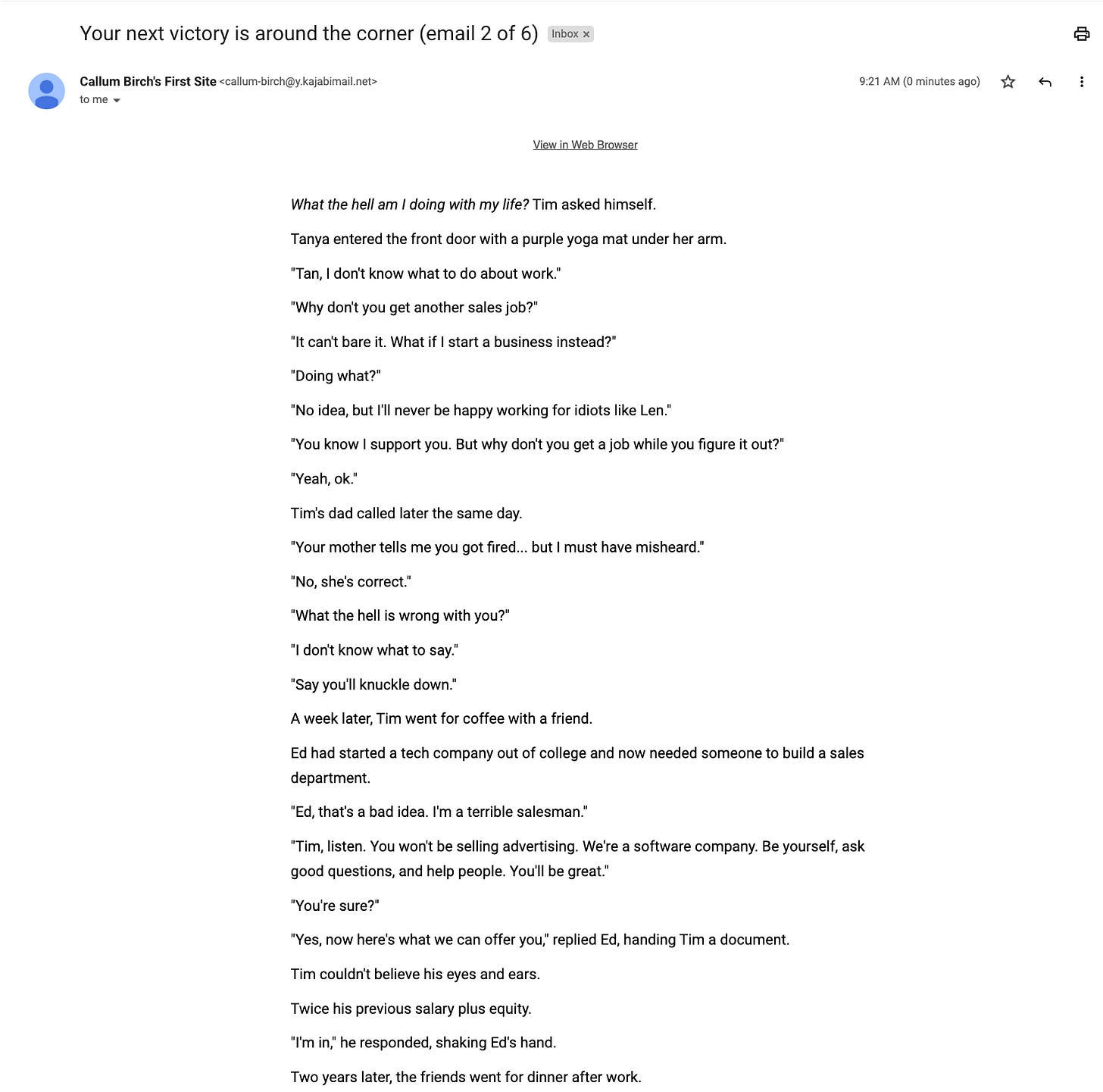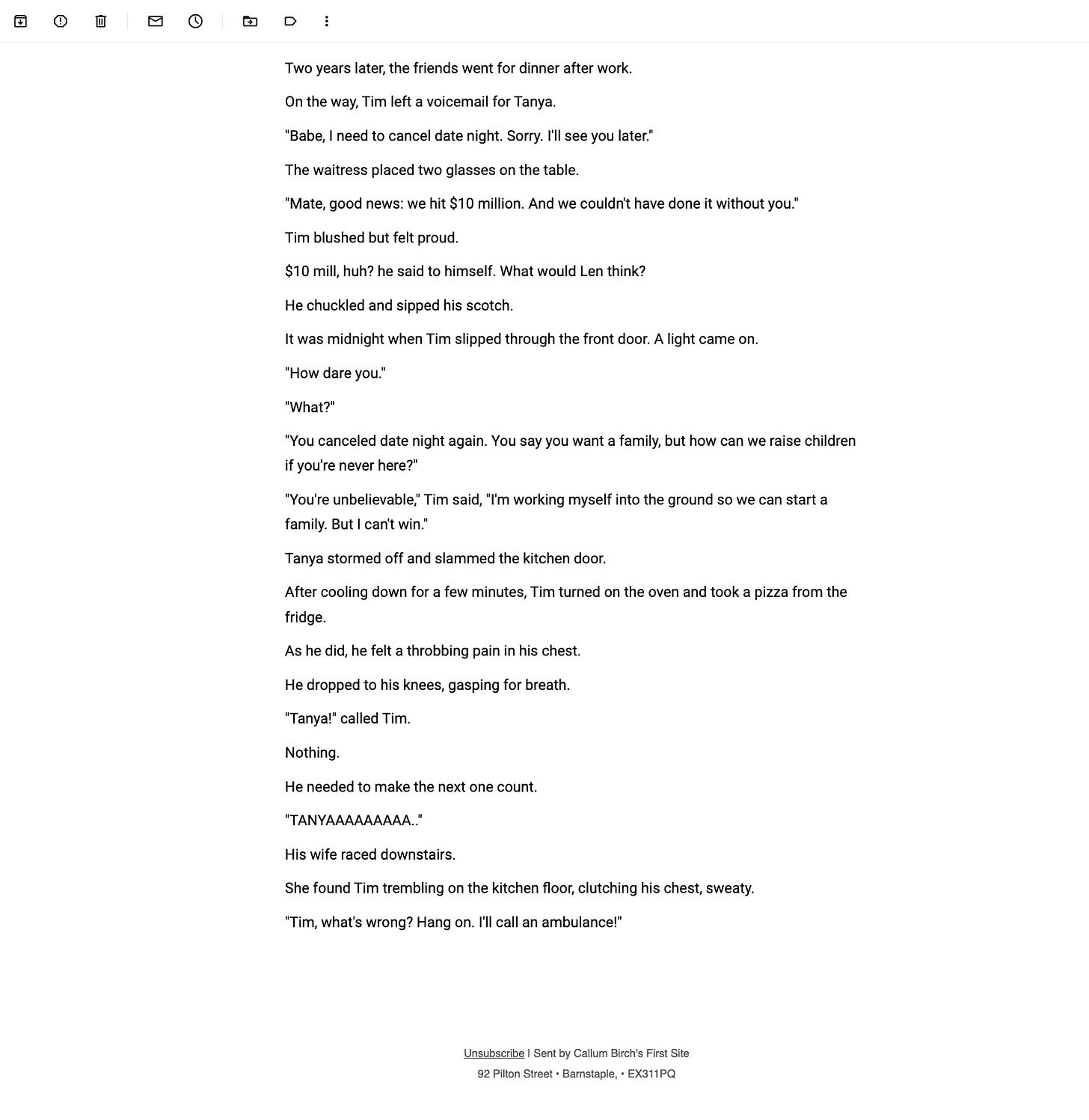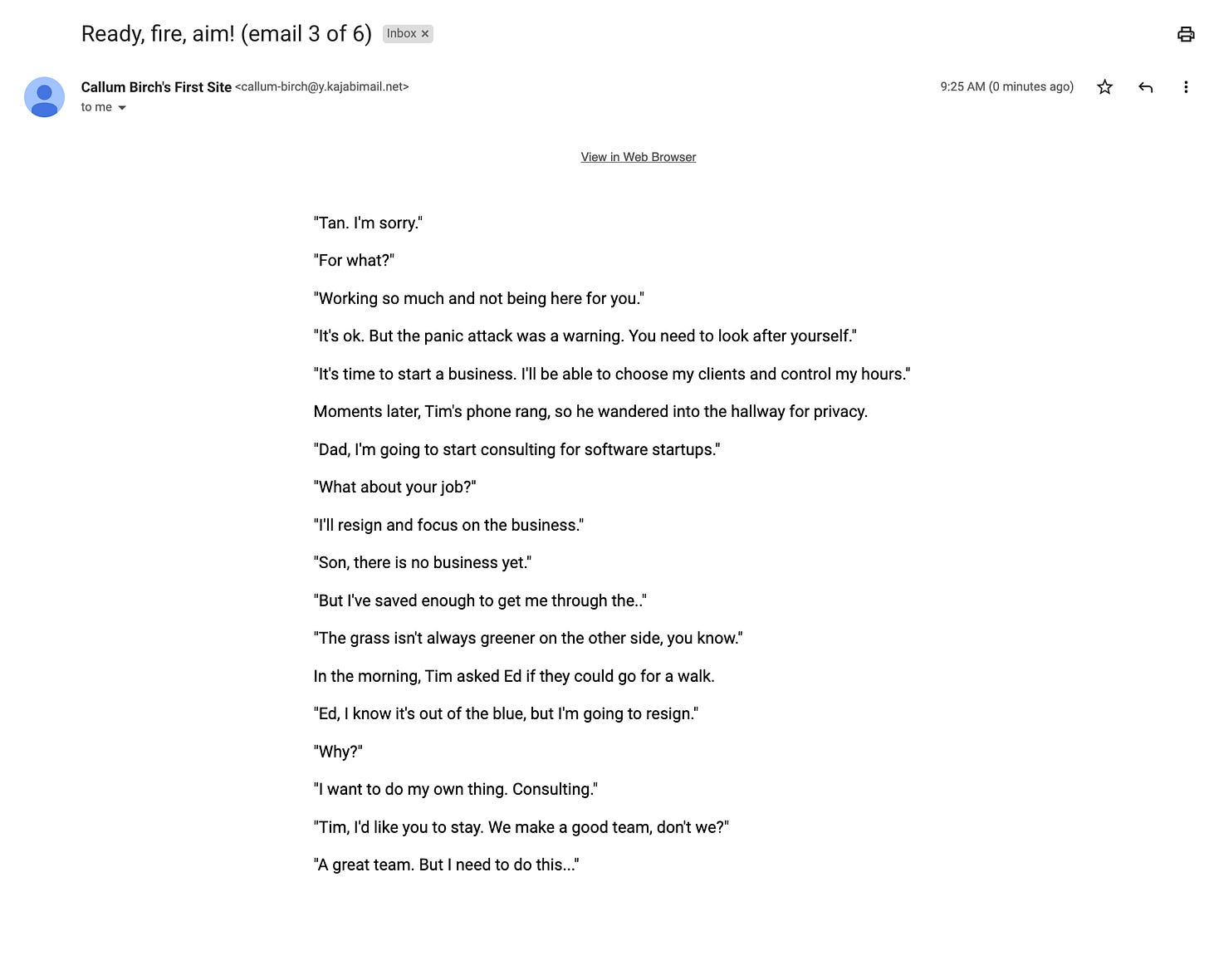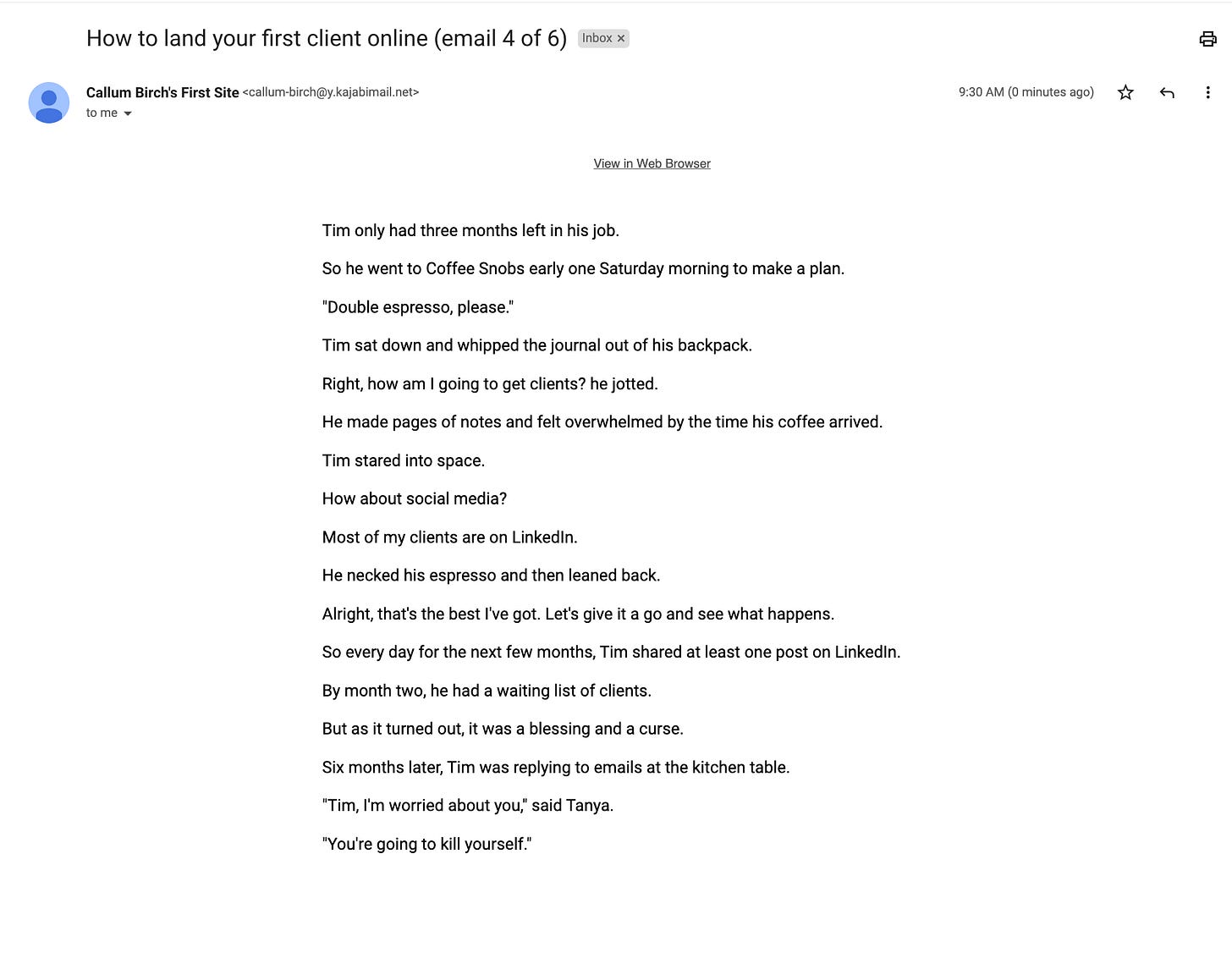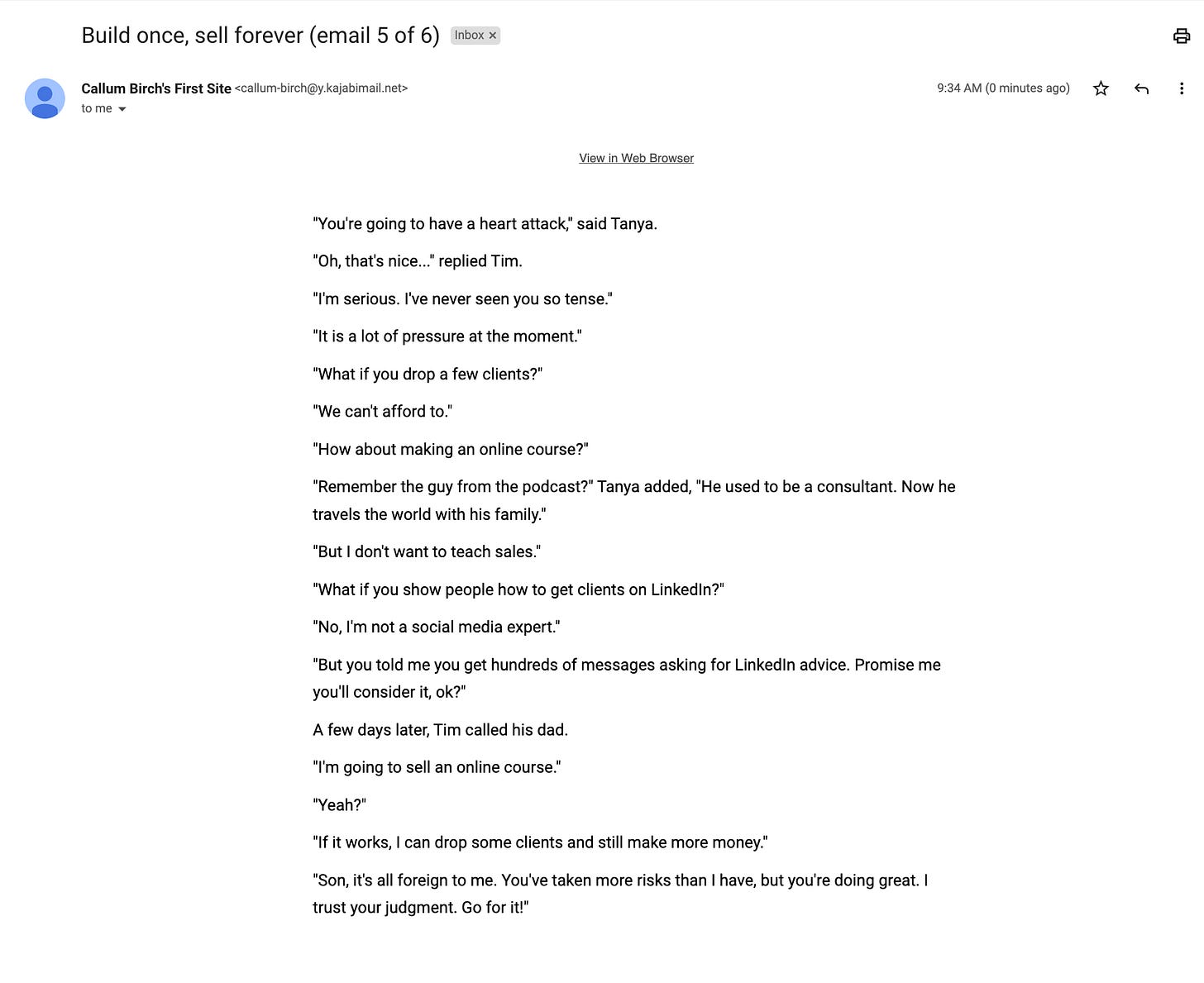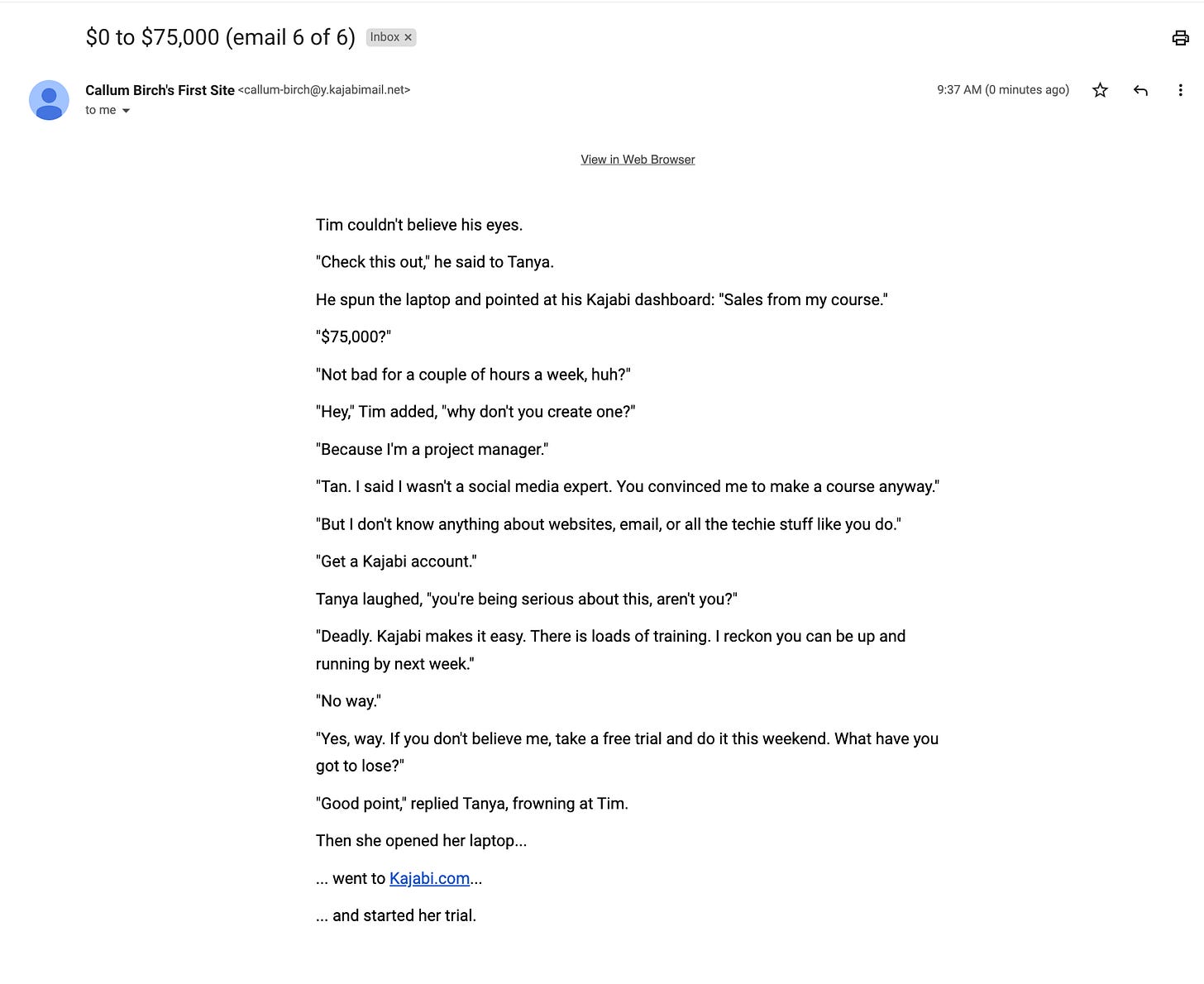Funnel analysis reveals $287k/month opportunity for Kajabi
I’ve identified an opportunity for Kajabi to produce an estimated $286,560 monthly recurring revenue (MRR).
I’ve also developed a strategy - and built the initial marketing assets - to exploit this opportunity for the minimum investment of time, energy, and capital.
To be clear: I’m doing this without permission, so I’ve had to make some assumptions about performance (e.g., the percentage of website visitors who subscribe).
I’ve tried to be very conservative - and base estimations on industry standards - but there’s plenty of room for error - so I could be off the mark.
Nevertheless, the opportunity seems big enough to warrant demonstration, even if it’s much smaller than I think.
Ok, without further ado…
The Current Picture
According to similarweb, Kajabi.com gets 3.2 million visitors per month.
What’s more, Kajabi recently raised $500 million - and the creator/knowledge economy is expanding rapidly - so traffic is likely to increase.
So what do 3.2m people do on the Kajabi website?
Some browse and leave.
Some opt-in.
Some accept a trial offer.
Some pay for a subscription.
I don’t know how many drop off at each stage.
So I’ll make some hypotheses:
2% of website visitors (64,000) raise their hand (opt-in).
1% (32,000) accept the trial offer.
0.1% (3200) begin a paid subscription.
The average transaction value is $199 (standard post-trial subscription price).
Lifetime value (LTV) of each customer is $1194 (6 months at $199/month).
Revenue:
$3.8 million MRR.
(3200 customers X $1194 lifetime value)
But revenue doesn’t tell the whole story.
Kajabi invests time, energy, and capital to attract prospects and service its customers.
Money in.
Money out.
Both are critical.
And any investment aims to maximize the return on investment (ROI).
Marketing investments are no different.
Here’s why this is relevant:
When researching Kajabi, I exchanged my email address to download a report: The State of the Creator Economy 2022.
I also began to sign up for a trial subscription but abandoned the process because I feared forgetting to cancel a $199 per month subscription I didn’t need.
Therefore, I suspect that thousands of website visitors like me are leaking out of this hole in the funnel, along with the resources invested in attracting them.
Further, it doesn’t seem like these prospects are being recovered.
I agreed to receive marketing communication with two email addresses.
In the subsequent two weeks, I received two emails from Kajabi.
One asked me to complete a survey about my experience…
The other made a subscription offer with a one-day deadline.
That means there’s scope to communicate more frequently and effectively.
In other words: it’s an easy leak to plug.
The Opportunity
Based on the maths above, I estimate that Kajabi has around 32,000 unconverted monthly leads - people who opt-in but don’t start a trial.
If we can persuade 0.5% of the 32,000 to accept a trial offer, that’s 1600 new trials per month.
If we can get 15% of the trial leads to subscribe, that’s 240 new monthly customers.
Hole plugged.
Here’s what the result would look like financially:
240 subscriptions X $1194 LTV =
$286,560 MRR, or…
$3.4 million ARR.
Ok, that’s the opportunity for recurring revenue.
But we’ve all heard the saying...
Revenue is vanity.
Profit is sanity.
Cash is king.
So what does this look like as net profit?
Unfortunately, I’m not privy to Kajabi’s profit margin.
But I do know:
Existing revenue covers Kajabi overheads.
Assuming no more staff, equipment, or other fixed investments are required to service the extra customer, the only costs incurred are variable.
In a software business, variable costs are relatively low.
Revenue from the additional customers is almost pure profit.
A Potential Solution
It’s shockingly simple:
Maintain frequent communication...
With everyone who opts in.
There are three advantages to doing so:
1. Convert serious (but busy or procrastinating) prospects immediately
2. Provide a place for future customers to gestate
3. Generate referrals from non-prospects
Plus, there’s a bonus:
Most online business owners (Kajabi customers) know the value of email marketing.
So sending top-notch email sequences is a massive opportunity for Kajabi to demonstrate its value and earn the trust of prospective customers.
The Strategy
Even random but consistent emails would result in more trial conversions.
But a strategic approach will yield better returns.
First, an assumption:
Some of the unconverted leads would happily accept the standard trial offer.
It’s a big ask for someone to commit to automatic billing on their first visit to a website - even if they’re familiar with Kajabi and what it can offer.
But if they receive follow-up communication that cuts through the noise - and keeps the decision top of mind - the “hottest” leads will accept the trial proposition.
Second, the plan:
I propose a daily email sequence that welcomes prospects and demonstrates the value of Kajabi without overt or aggressive selling.
Then add a shorter promotional email sequence for the remaining unconverted leads - with a deadline to persuade more prospects to accept the trial.
Next, repeat this cycle of long relationship-building sequences - followed by short promotional sequences - with progressively more compelling offers.
For example:
Downsell 1: a 14-day trial with manual billing
Downsell 2: a 30-day trial with automatic billing
Downsell 3: a 45-day trial + free plan upgrade for 6m if they subscribe
Depending on how much you can afford to invest in acquiring customers on the front end in exchange for long-term back-end profit, you could be more or less aggressive with the offers.
Anyway...
Here’s how the strategy looks.
At every stage, communicate the offers with email sequences.
Send emails to offer the standard trial.
For those who don’t say “yes”…
Send emails to offer Downsell 1.
For those who don’t say “yes”…
Send emails to offer Downsell 2.
And so on.
The Tactics
The first part of the strategy is to follow up with everyone who:
Has opted-in, and
Has not accepted a trial offer
To achieve this, I’ve written a sequence of seven daily emails.
The primary goal of the sequence is to connect with prospects.
The first email introduces them to Kajabi and explains what to expect.
The subsequent six emails tell a story in short "episodes" based on the entrepreneurial journey of real-life Kajabi customer Justin Welsh.
I’ve changed the details but I think the story will resonate with a broad base of Kajabi customers.
Here are the emails.
Email 1: Personal Introduction
Email 2: Tim’s Story - Episode 1
Email 3: Tim’s Story - Episode 2
Email 4: Tim’s Story - Episode 3
Email 5: Tim’s Story - Episode 4
Email 6: Episode 5 - Tim’s Story
Email 7: Episode 6 - Tim’s Story
How to test the strategy
I would test the emails above with a segment of unconverted leads.
Then measure the response.
Here’s how.
Quantitatively:
How many trails?
How many subscriptions?
What is the average transaction value of subscriptions?
How long do they maintain the subscription on average?
How much did it cost to send the emails?
Qualitatively:
What did prospects say in email replies?
Did they connect with the story?
Which parts of the story did they connect with?
What prevented them from starting a trial?
Then stick or twist.
If it’s ineffective, either scrap it or make changes to the emails and test the new sequence on another segment of prospects.
If the signs are positive, add a 3-email sequence to the end for the remaining unconverted leads.
Make these emails more promotional.
Keep the standard trial offer...
... but attach a bonus.
Apply a 3-day deadline to the bonus and use it to create urgency.
After the deadline, the trial offer remains - as it does for everyone - but the exclusive bonus is gone forever.
If the emails and bonus are good, this sequence should get any remaining hot leads over the line and signed up for a trial subscription.
You can then continue to apply the rest of the strategy with the same approach but different down-sell offers.
Summary
As I said, I realize that I may be off the mark with my estimations.
But three things give me the confidence to publish:
I've tried to be conservative.
$3.3m is only 3% of Kajabi’s $100m + annual revenue (in the public domain).
If my revenue estimations are off by 50%, it’s still a $1.7m ARR opportunity
I'm sure you'll agree that an extra $1.7 million yearly is not to be sniffed at.
Plus, Kajabi already owns the email marketing infrastructure, so testing the strategy will require little time, energy, and capital.
In other words:
The upside potential is significant…
… and the downside is negligible.



